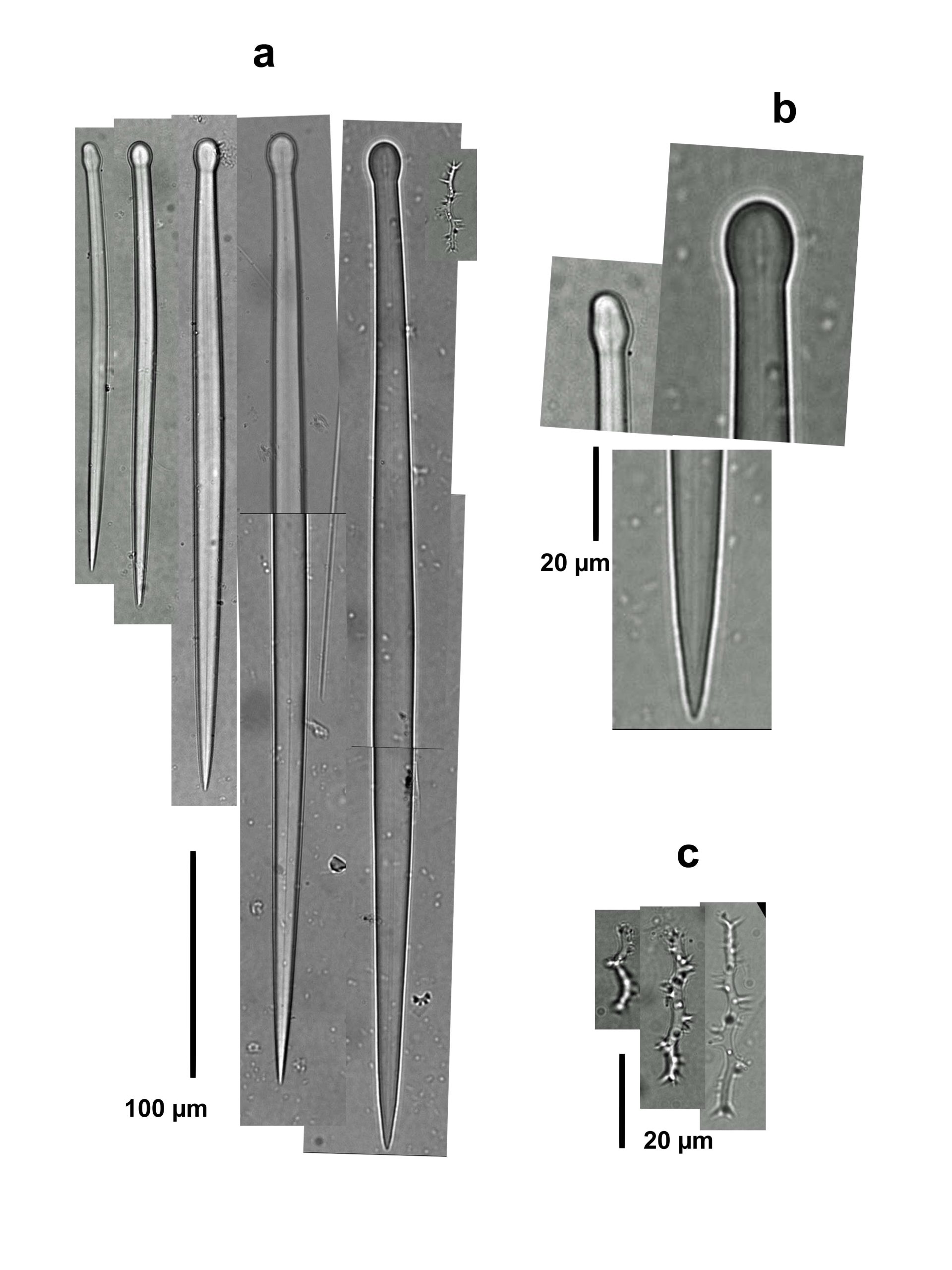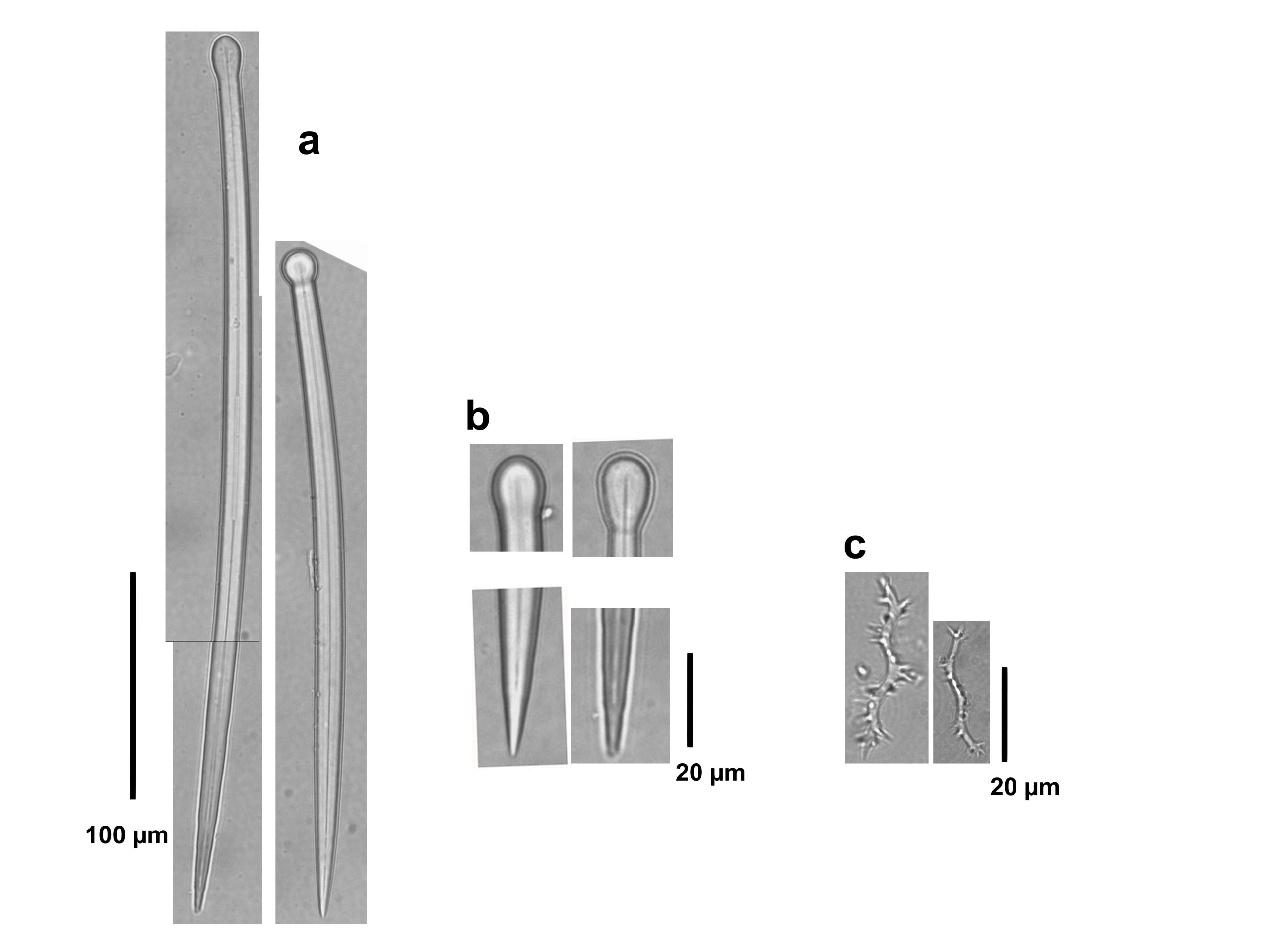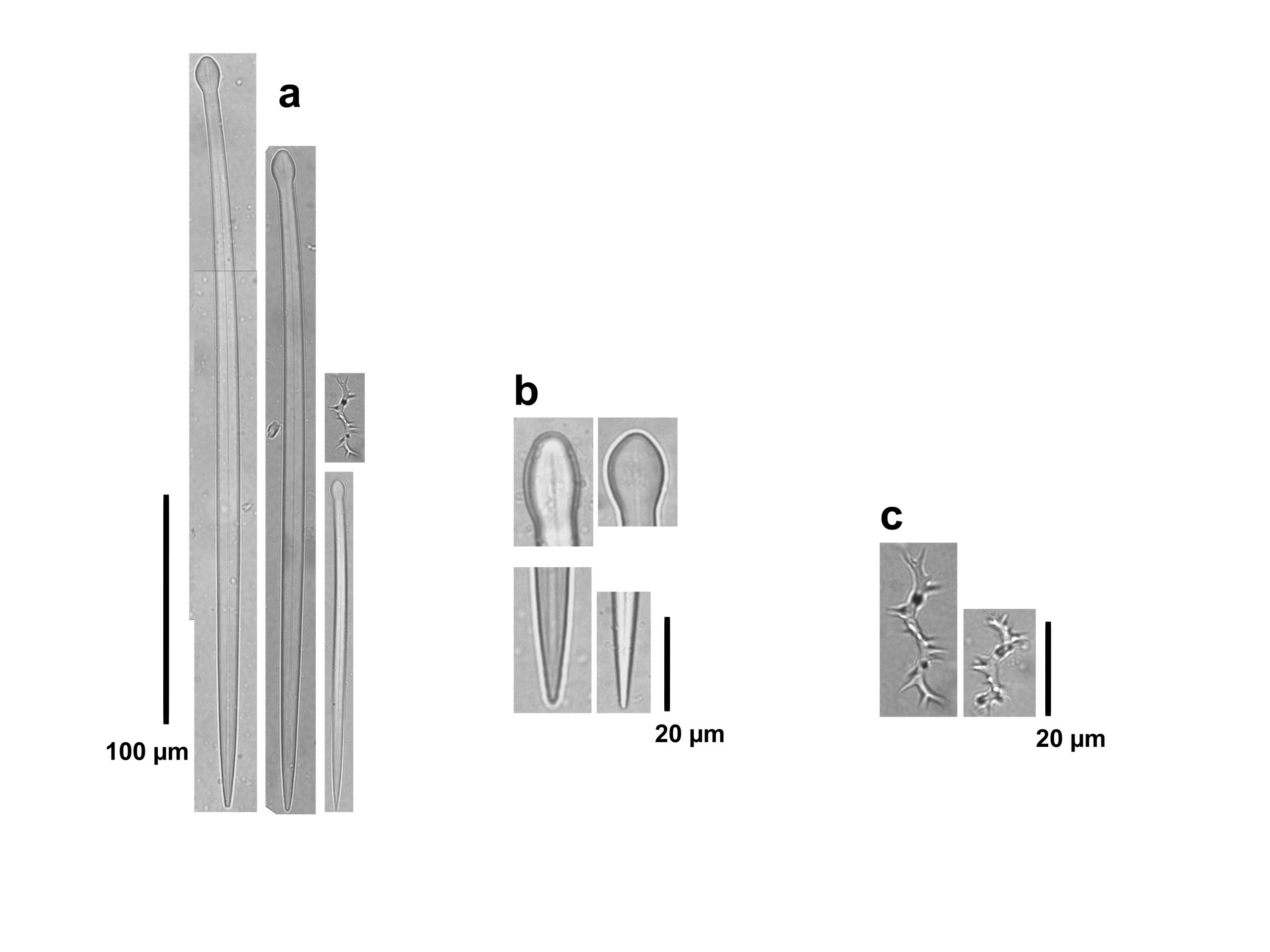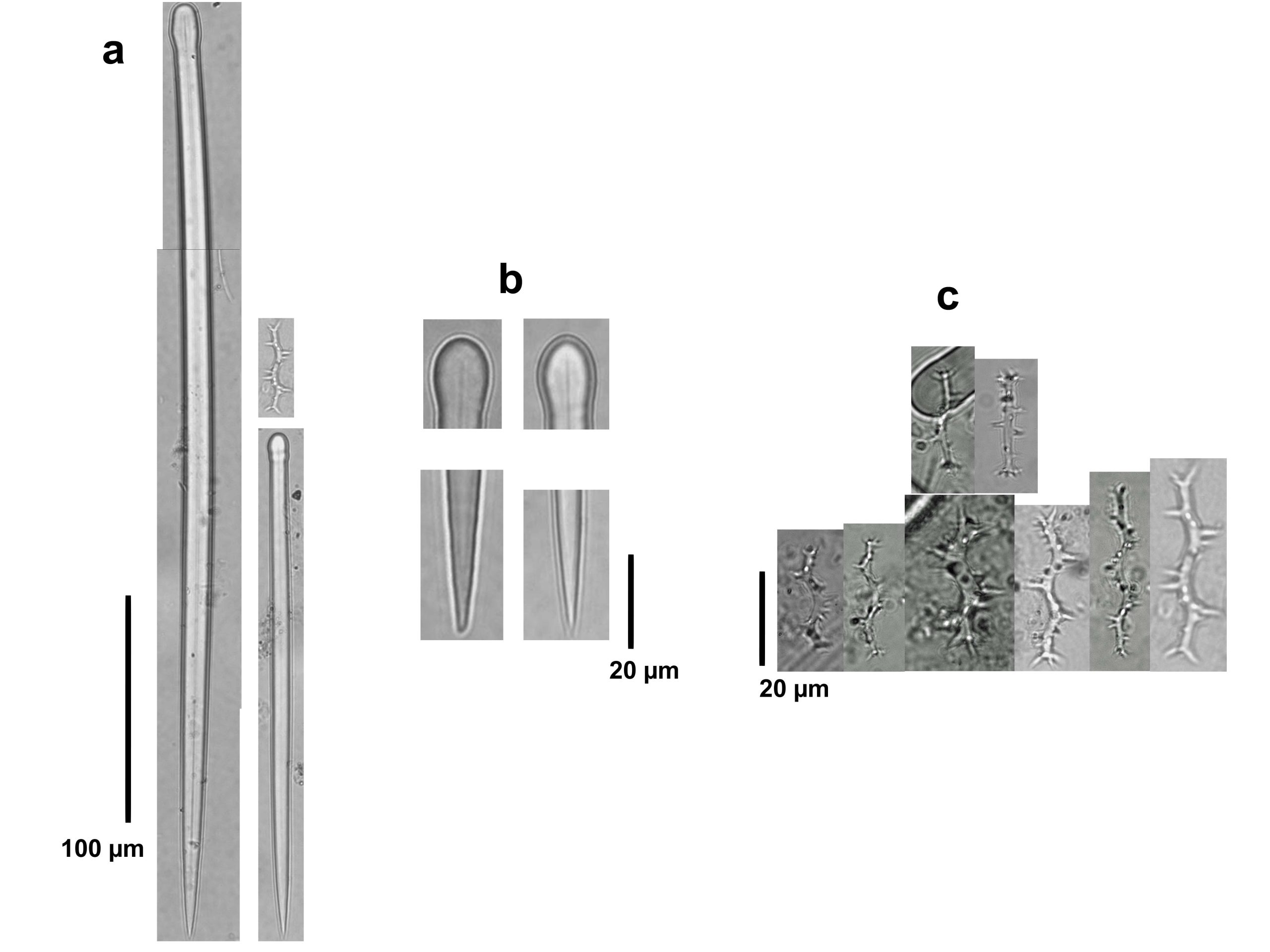Observed Characteristics:
Color:
- cinnamon-tan
- red
- brown
- white with brown edges
Morphology:
- papillated
Consistency:
- tough
Sample Locations:
- Colombia
Cliona flavifodina
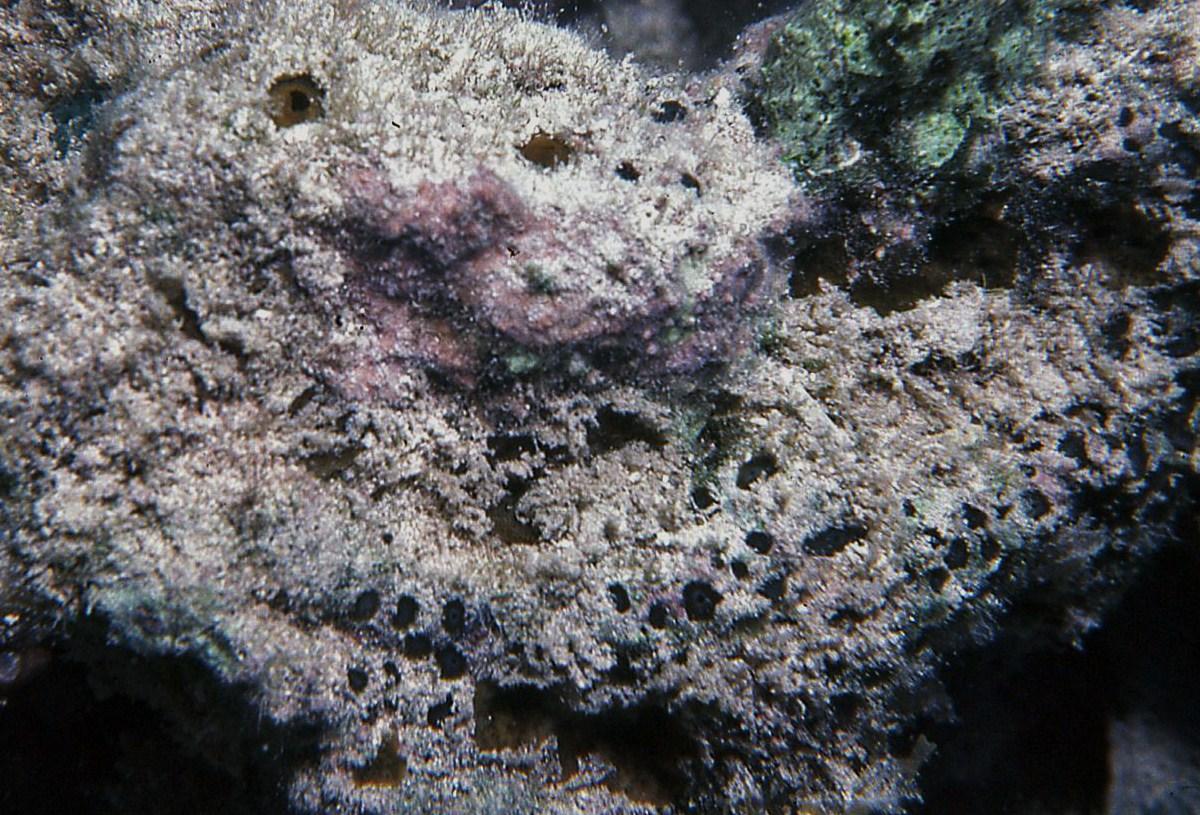
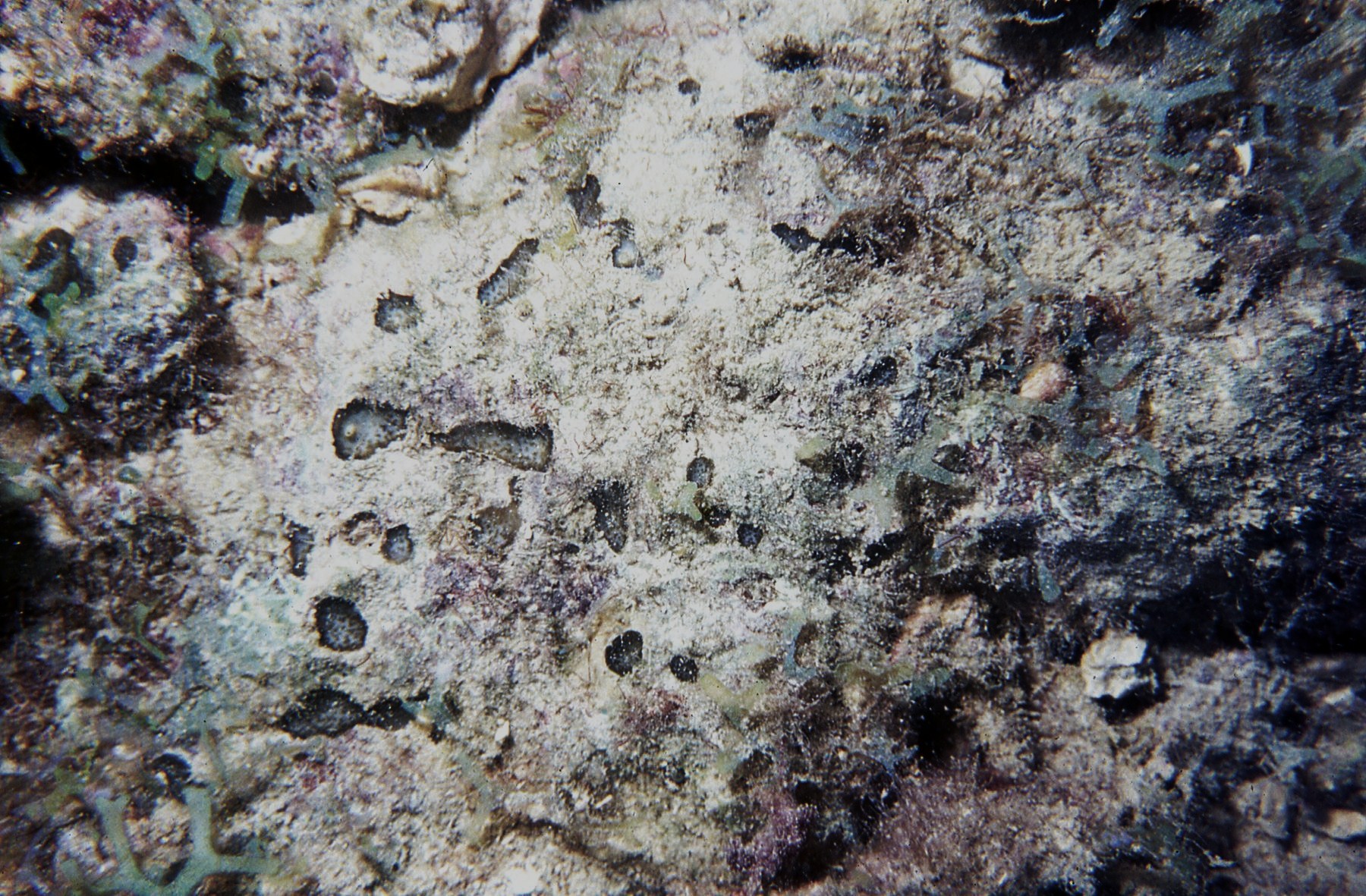
Description: Excavating sponge, showing low-lying papillae, scattered on the coralline substratum, light brown to tan to whitish (with brownish edges) in color. Papillae also reported red. Oscular and inhalant papillae are usually separated. Oscular papillae up to about 1 cm in diameter, visible as a thick tissue collar surrounding the osculum; inhalant papillae irregular and ragged in outline, up to several cm in maximum diameter, typically depressed towards the center, pierced by pores. When the substratum is broken, the galleries are wide (up to 1-2 cm in diameter), lined with yellowish tissue. Megasclere spicules are tylostyles, slightly curved, with drop-shaped heads and smooth, pointed ends, 180-430 µm long by 6.2-12.5 µm wide; the heads are 8.8-17 µm wide by 9.5-18 µm long. Microsclere spicules are spirasters, 15-50 µm long, slender, with a shaft up to about 2-3 µm thick, with up to 3-4 relatively narrow (6 µm wide) turns; spines are characteristically long and usually not divided.
Notes: This species lives in shallow reef and rocky locations. What was described as Cliona caribbaea by Pang (1973), turned out to be this species (see Zea & Weil, 2003). Also, some of the specimens named C. caribbaea by Hofman & Kielman (1992) from Santa Marta, Colombia are C. flavifodina. This species is distinguished from other Caribbean species by its wide and irregular inhalant papillae, and the longish spines of the spirasters.
Author Reference: Rutzler, 1974
Link: World Porifera Database
